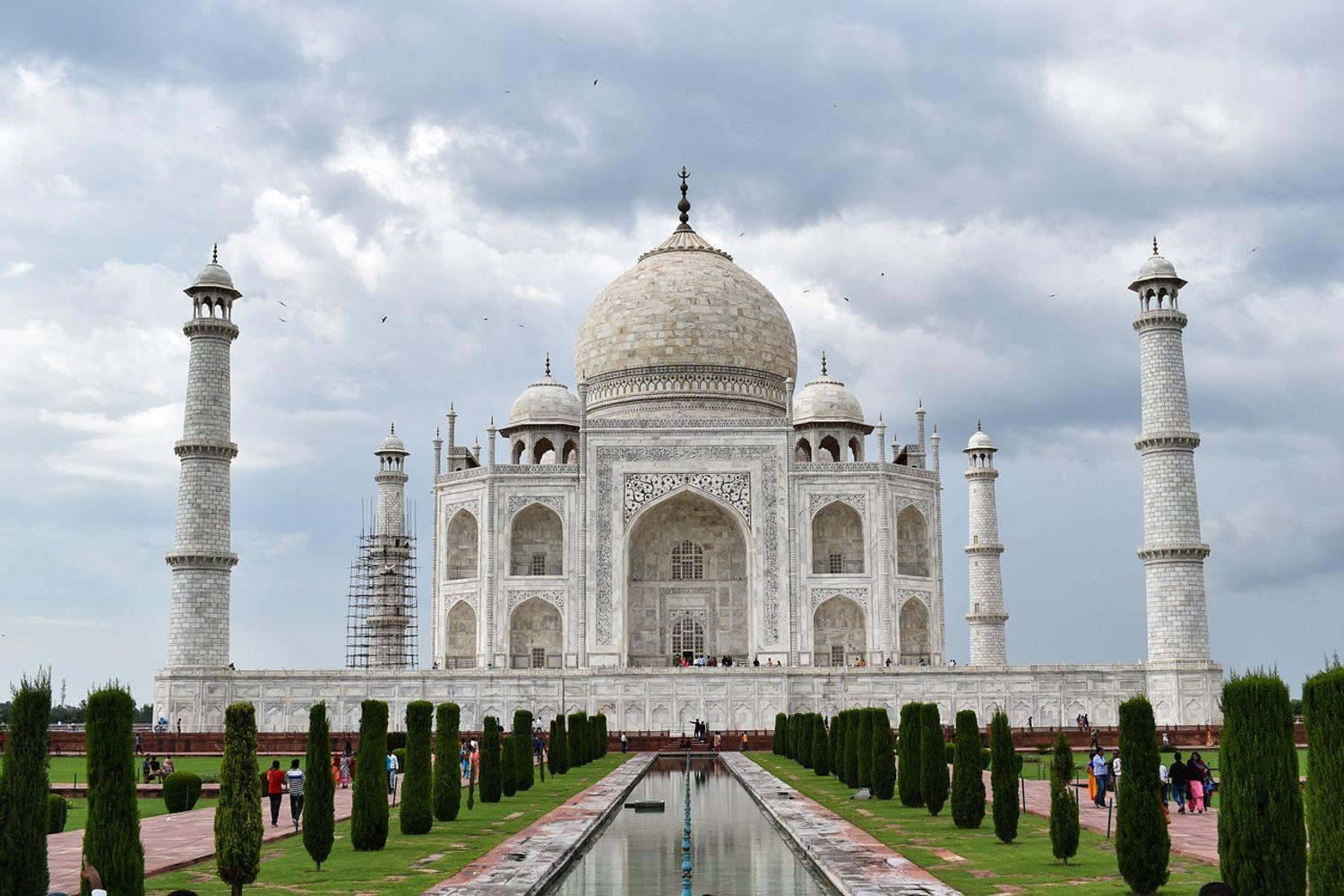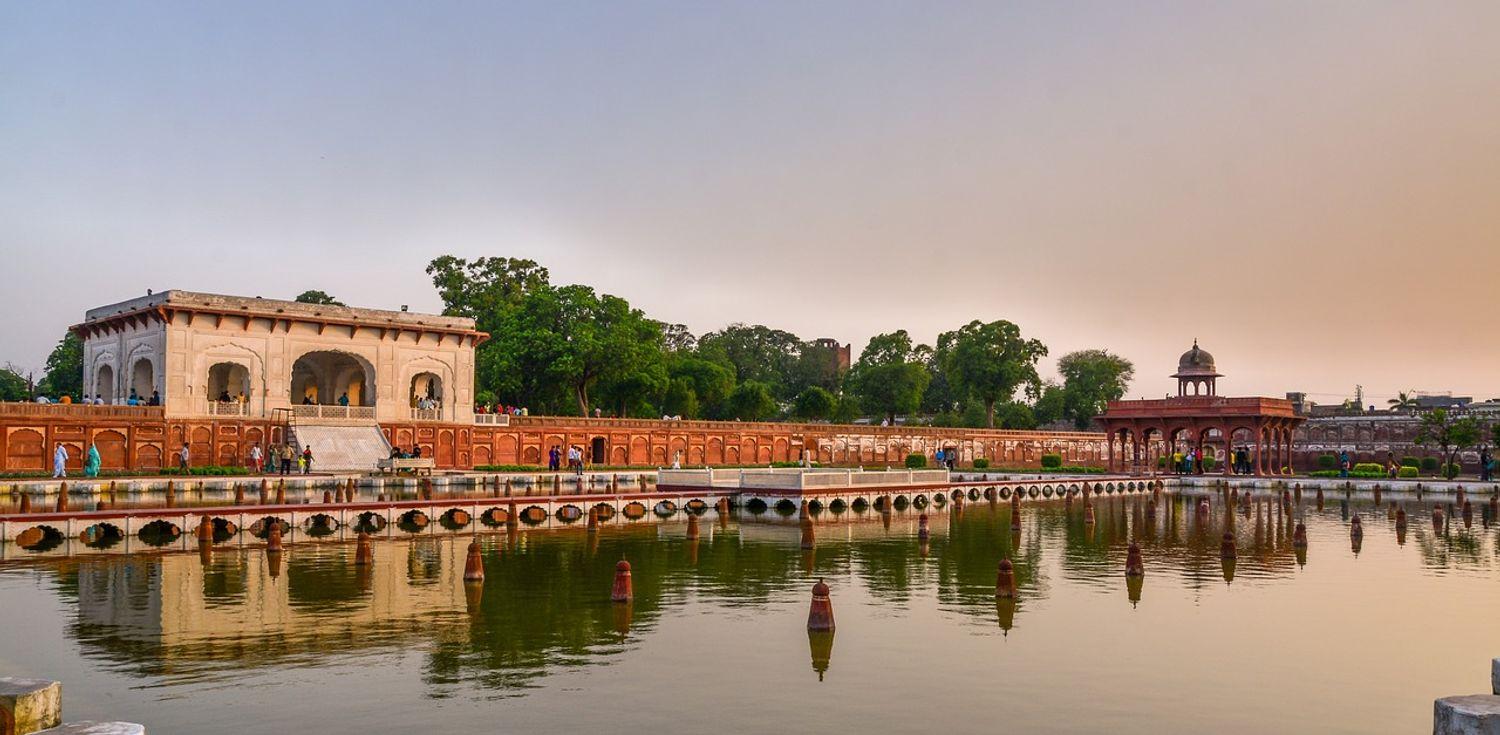One of India's most magnificent cave temples, Kailasa Temple was built from a single block of stone that had been unearthed. The gigantic structure is one of the Ellora Caves, a group of 34 cave temples and monasteries.
The caves, which are a UNESCO World Heritage Site and contain structures dating from between 600 and 1000 CE, are situated in the western part of Maharashtra.
Even though the site is home to several spectacular buildings, the megalithic Kailasa temple is undoubtedly the most well-known. Although Kailasa Temple is renowned for both its vastness and magnificent ornamentation, it is unclear who ordered its construction.
Although there are no documented records, researchers typically credit Krishna I of the Rachtrakuta, who ruled from from 756 to 773 CE. This claim is supported by a number of epigraphs that link the temple to "Krishnaraja," despite the fact that no writings concerning the king specifically mention the temple.
Despite the fact that its exact beginnings are still unknown, a mediaeval tradition suggests a romantic story behind the enormous structure. According to a tale recorded in Katha-Kalpataru by Krishna Yajnavalki, the queen of a sickly monarch pleaded to the deity Shiva for the healing of her husband.
The queen promised to build a temple in Shiva's honour and to abstain from food until the temple's shikhara, or summit, was finished in exchange for his good health.
Huge stone sculptures show several Hindu deities, with Shiva receiving special attention. As one passes the gopuram, panels on the left display Shiva-followers, while panels on the left display Vishnu-followers.
A herd of sculpted objects at the temple's base gives the impression that they are carrying the structure on their backs. Kailasa is regarded as a premier example of Indian art and architecture because of these exquisite sculptures as well as the extraordinary engineering of the temple.
Interesting Facts about Kailasa Temple of Ellora
One of the 34 cave temples and monasteries that make up the Ellora Caves, one of the most popular tourist attractions in Maharashtra, is the Kailasa Temple, also known as Cave 16.
It is a megalith made of a single rock and is regarded as one of the world's largest monolithic excavations as well as one of India's most amazing cave temples. The temple is notable not just for its enormous size but also for the quality of its sculptures and other architectural components.
World's Largest Monolithic Structure
Ellora Caves, sometimes referred to as "Verul Leni" locally, are well-known for housing the magnificent Kailasa Temple, the largest monolithic excavation in the entire world. A free-standing, multi-story temple complex devoted to Lord Shiva is known as The Great Kailasa.
This 1300-year-old architectural wonder is regarded as the largest monolithic work of art in both India and the entire world. Its unique feature is that it was carved out of a single volcanic basaltic rock from the Charanandri hills.
Even the statues in this mysterious temple were cut from the same rock as the building itself. Pallava and Chalukya architectural influences may be seen in the temple. It is one of the Ellora attractions that you must see while on your Aurangabad trip because it has been drawing big numbers of tourists from all over the world for centuries.
Carved from Top to Bottom
The vertical excavation that was used in the Kailasa Temple's construction is noteworthy; it began at the top and continued downhill, rolling down the big rocks that had been broken from the mountain using steel rod drills.
The adjacent walls still have drill holes that can be seen. The Kailasa Temple is the only building in the world that is carved from top to bottom; it is a megalith made of a single rock.
Every design and measurement was meticulously planned since once it was cut, there was no way to change it by adding more rock or stone. According to legend, almost 200,000 tonnes of rock were excavated to build this monolithic monument.
Built in 18 years Only
The Kailasa Temple, the most well-known of all the Caves at Ellora, was built by Rashtrakuta monarch Krishna I in 756-773 CE and has captivated scholars and visitors for centuries. According to the researchers' calculations, building the temple would have taken more than a century.
In actuality, it was finished in just 18 years. About 200,000 tonnes of granite were scooped out of a vertical basalt cliff in the Charanandri Hills to create the majestic temple, which was cut into a U shape about 50 metres in the back.
Everyone is attempting to comprehend how the temple was carved out of the rocks using traditional ways from long ago and without the use of modern technology.
Represents Mount Kailash

The temple, which is devoted to Lord Shiva, is built in a style that is reminiscent of the holy Mount Kailash, the mystic home of the presiding deity. The entrance corridor is flanked by two inner courtyards, each of which features a massive monolithic elephant and 15-meter triumph pillars. Nandi, a sacred bull, is depicted standing in front of the Shivalinga.
The main Shiva temple and Nandi mandapa are both seven metres tall and have two storeys. The ground level creates the illusion that elephants are supporting the entire building. Some remnants of the original plaster that covered this building in order to make it appear snow-covered like the revered peak Kailash still exist today.
Larger in area than Parthenon in Greece

In India, the Kailash Temple is regarded as one of the most amazing cave temples because of its enormous size, elaborate architecture, and artistic carvings. Kailash Temple has dimensions of 145 feet by 195 feet by 90 feet, and it is twice as tall as the Parthenon in Athens, Greece.
The Kailash temple is one of the biggest buildings in India and the entire globe, rivalling even the Taj Mahal in Agra, with its enormous monolithic main shrine, gopura, and enclosure walls on either side.
Intricate Sculptures and Carvings

Ellora Caves are a significant achievement of ancient Indian culture since almost every internal surface is covered in elaborate sculptures and carvings that showcase artistic richness and philosophy.
The image of Nandi, four sculptures of lions standing in a circle on the roof of Mahamantapa, and monolithic elephants and victory pillars at the entrance are some of the most notable. The elephant sculptures at the base of the temple give the impression that the entire structure is supported on the backs of these beasts.
Aside from scenes from the two main Hindu epics, the Mahabharata and the Ramayana, and ten panels showing the various incarnations of the Hindu god Vishnu, the Kailasa Temple also contains other elaborately carved panels. The most notable of them is of Ravana, the demon king, striving to raise Mount Kailasa.
The Temple could not be destroyed

The Kailasa Temple of Ellora is the subject of an intriguing story. In addition to trying to destroy the Kailasa temple, Mughal King Aurangzeb also destroyed thousands more Hindu temples.
In the year 1682, it is stated that 1000 individuals were dispatched to destroy the temple. They toiled for three years, but they were only able to deface and break a few sculptures.
Aurangzeb eventually gave up on this project after learning that the rock was simply too hard to break down, despite the fact that workers had only employed hammers, chisels, and picks to build the temple.
Kailasanatha Temple Ellora History

The Kailas cave, the 16th cave of the Ellora caves, contains a temple hewn from a single rock. The Rashtrakuta Dynasty built the temple, which was devoted to Lord Shiva. The temple's design is reminiscent of a mountain image.
The carvings in the temple are unique in that they face above and downward. The temple's construction required the removal of about 200,000 tonnes of stone over the course of about 18 years.
The temple is renowned for its architecture, which displays the epic Ramayana, Mahabharata, and the exploits of Lord Krishna etched onto the temple walls. Epic carvings include the one depicting Ravana attempting to move the mountain.
When you hear the term Kailasa temple, the first image that springs to mind is the well-known rock pillar known as Dhawajasthambam. The temple displays Lord Vishnu's incarnations, and among those incarnations are the ten Lord Vishnu avatars.
There are numerous legends that describe the building of the Kailasa temple. In one legend, Yajnavalki (14701535 CE), the queen pleaded to Lord Shiva in Elapura for the local monarch's recovery because the king was not improving from his illness.
In exchange, she promised to fast until she saw the shikra (point) of the temple and to establish a temple in honour of Lord Shiva if her wish came true. Following his recovery, the King gave the go-ahead to build the temple. The architect Kokasa gave the highnesses assurance that they could complete the shikhara in seven days, or one week.
The temple was thereafter given the name Manikeshwa. The Kailasa temple has two levels that display the Shiva temple and the Nandi mandapam. The Nandi confronting the lingam is a magnificent structure that is around 7 metres high.
The Nandi Mandapam is supported by 16 pillars, and the temple features rock carvings, meeting areas, and windows where the Shiva Linga grants heart peace.
Kailasa temple built by

The Kailasa temple is located in cave 16. One of the most amazing temples may be found in the Ellora caves. It is named after the Himalayan Kailas range. Krishna I, a ruler of the Rashtrakuta Dynasty, constructed the temple.
They were built between 600 and 1000 AD. It is 50 metres long, 33 metres broad, and 30 metres high. One single, enormous stone was used to chisel out the entire temple.
Not to be missed at Kailasa Temple

The entire Kailasa Temple complex, as well as each individual corner, has the power to astound visitors. It plays out like a magnificent movie, scene by scene.
There is so much we want to say, yet doing so now would likely give away crucial plot points. We have found that it is better for you to find the temple on your own, according to your own preferences.
Ravana statue

This resembles a big plaque showing the demon king Ravana attempting to move Mountain Kailasha so that his realm, Lanka, could replace it. The numerous characters' expressions in this composition are interesting to examine.
Shiva is calm yet amused as he uses his big toe to push the mountain back. Parvati is upset and is embracing Shiva, while her friends are terrified and attempting to flee. Shiva's followers, on the other hand, are unconcerned and sure of the strength of their master.
Dhajastambha
On the courtyard are two monolithic obelisks that may have served as flagstaffs or Dhajastambhas. Notable are the exquisite carvings on the upper parts.
The elephants and lions

On the bottom faade of the main temple, there are endless rows of elephants and lions that appear to be supporting the shrine. Lions represent dominance, while elephants represent riches. Each animal takes a different posture.
Statues of Ganga, Yamuna and Saraswati rivers

The compound contains a separate shrine for the heavenly manifestations of the rivers Ganga, Yamuna, and Saraswati. Another one of Lord Shiva's consorts is the River Ganga. The rivers' exquisitely sculpted human figure is remarkable.
Ardhanariswara
The male and female characteristics of the Ardhanariswara statue of Lord Shiva on the first floor are harmoniously combined.
Mahishasuramardini

The Mahishashurmardini form of Goddess Durga, located on the first floor of the main temple, caught our attention. This can also be the case because we like the Durga Puja celebrations in Delhi and Kolkata, during which the Goddess is adored in this form.
The bridge
The primary shrine, or Gopuram, and the auxiliary shrine for the bull Nandi, Lord Shiva's mount, are connected by a bridge on the first level. This bridge is ideal for photos since it beautifully conveys the splendour of the Kailash Temple.
What is the architectural speciality of Kailasa Temple?

The world's largest monolithic temple is called Kailasha Temple. On the Charanandri Hills, a basalt cliff was chiselled away to create it. The temple was built using an advanced and refined architectural technique.
From the rock, the megalith was removed top-down. In other words, the temple's spires and roofs first appeared, followed by the temple's body and ultimately its base. All of this was accomplished using only a hammer and chisel.
Researchers are still baffled as to how this accomplishment was accomplished in earlier times.
Modern architects believe that it would be very impossible to create a beautiful structure like this monument utilising top-down technology even in this day and age. Unsurprisingly, the idea that Kailasha Temple was constructed by aliens circulated.
This beauty was meticulously carved out by thousands of skilled artists, not by aliens. According to researchers, there is proof that this project likely involved professionals from many geographical areas and architectural sub-styles.
Some of the theories might just be speculation. In actuality, during that time Indian culture had attained very high levels of artistic and technical proficiency
Entry Timings
All days of the week
Morning: 06:00 am to 12:00 pm
Evening: 05:00 pm to 08:00 pm
Entry fees

(AT THE ELLORA CAVES TO REACH KAILASA TEMPLE)
Rs. 10 per person (Indians)
Rs. 250 per person (foreigners)
Rs. 25 per camera video photography
Note: Guide services at ticket counter
How to reach :
By Road: Aurangabad Bus station 30 km
By Rail: Jalgaon Railway Station
By Air: Aurangabad Airport 37 km




